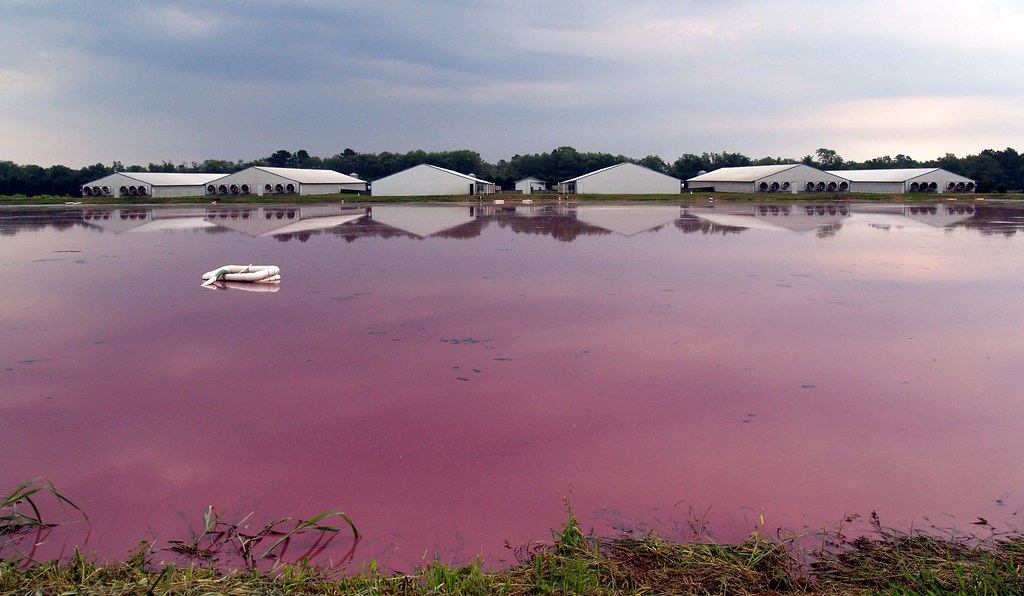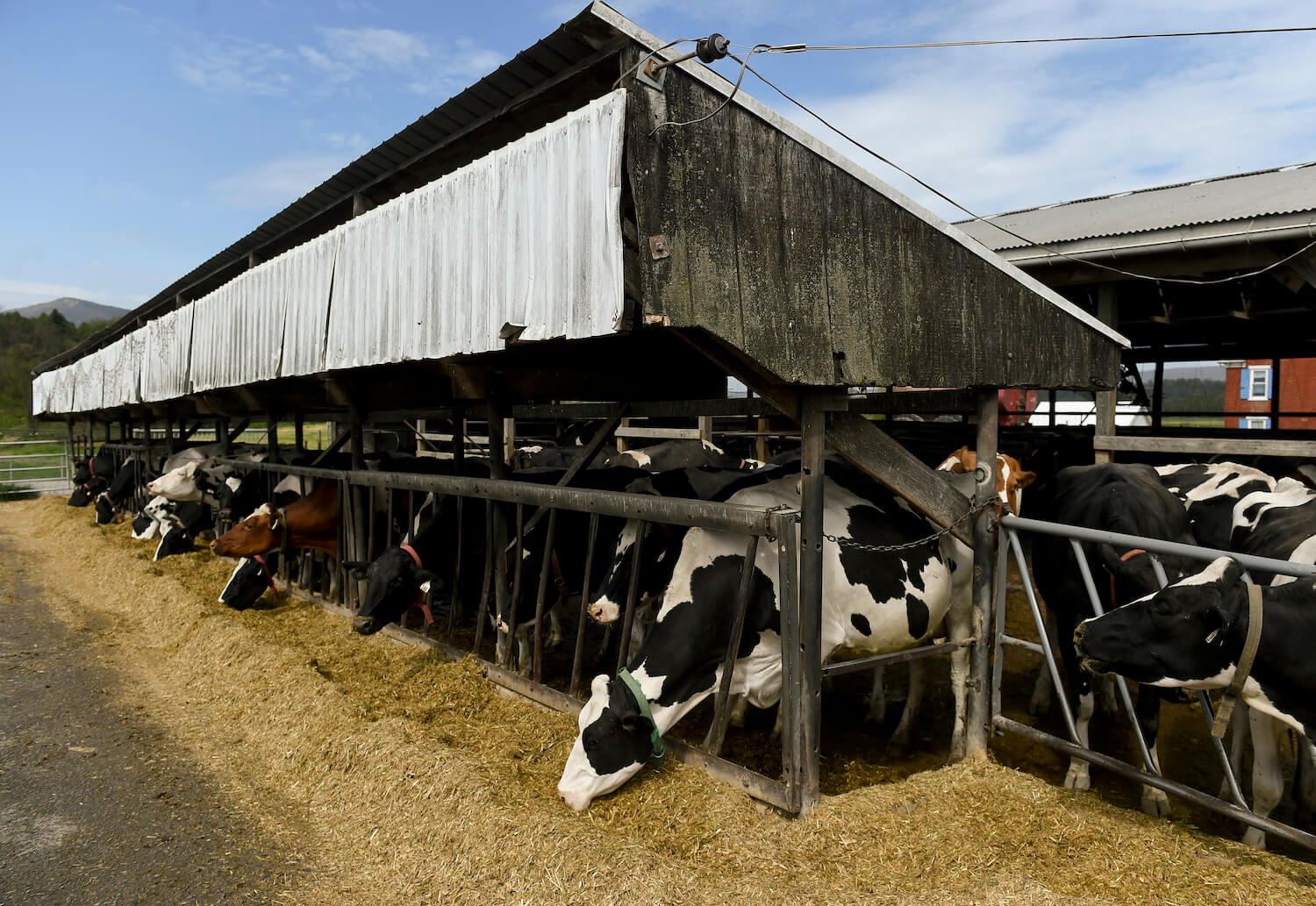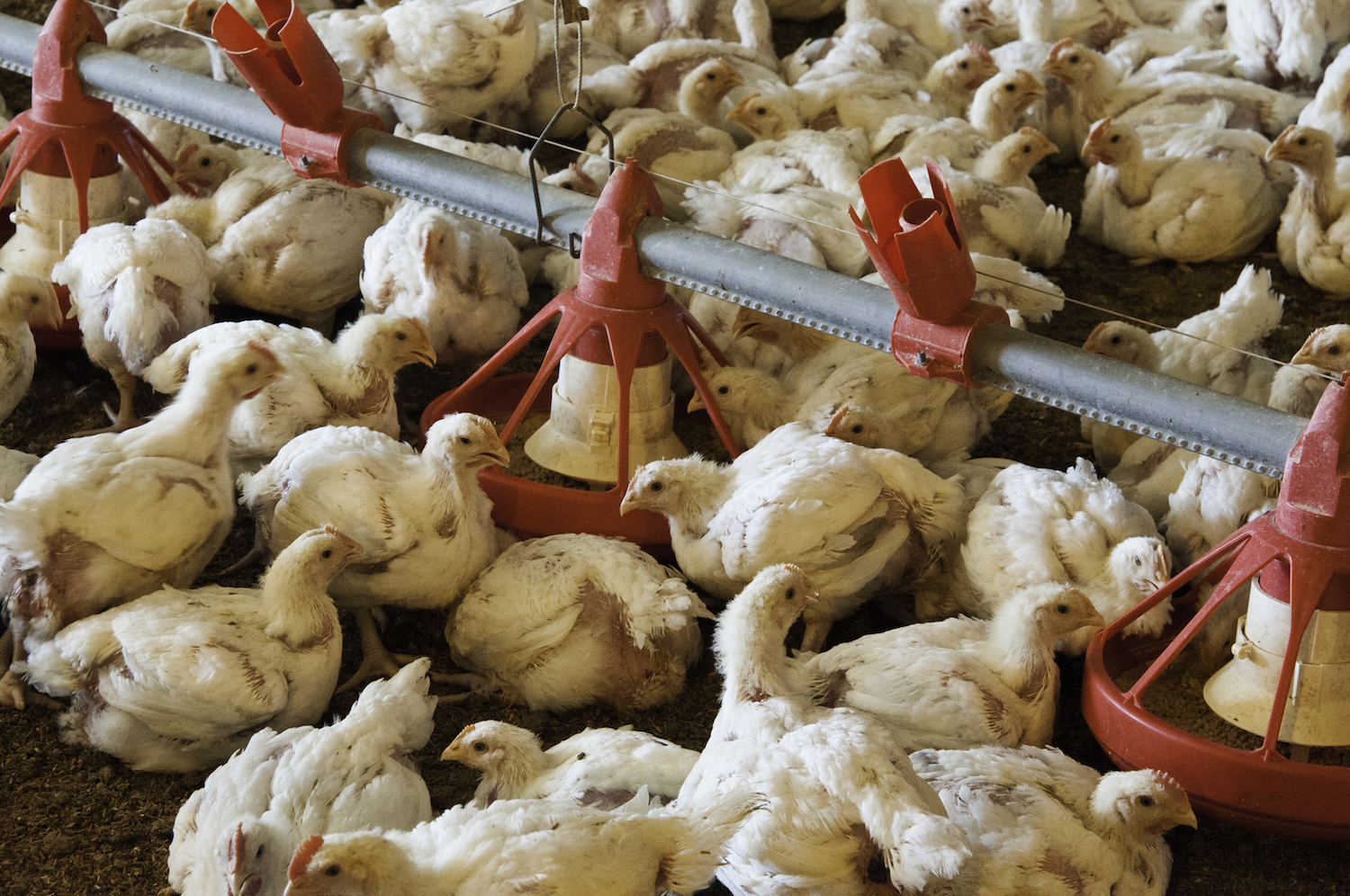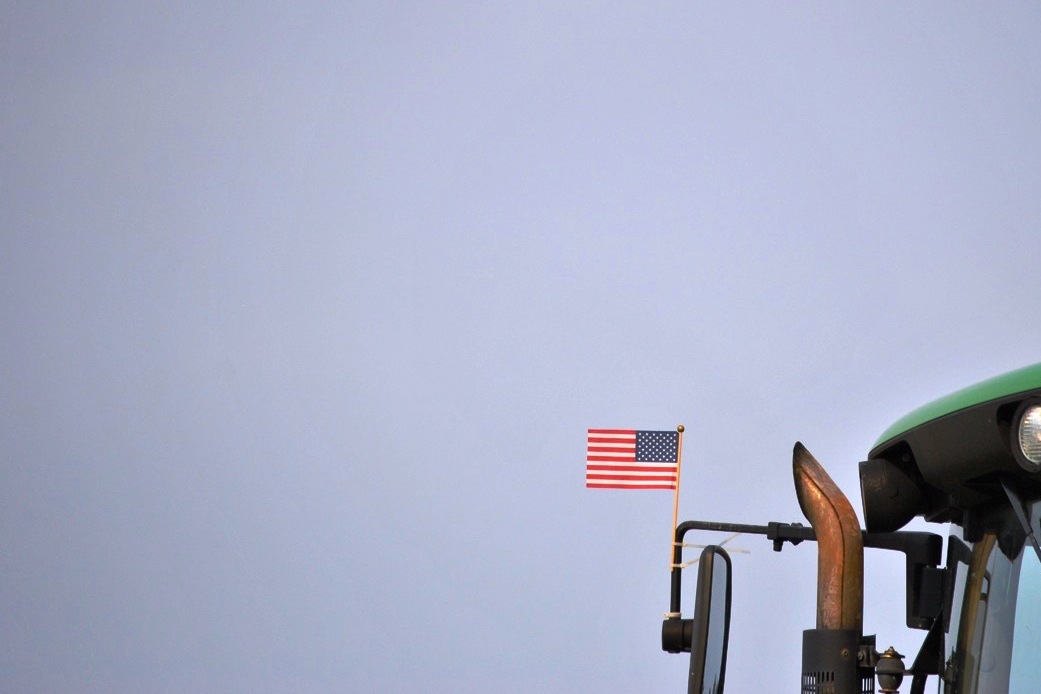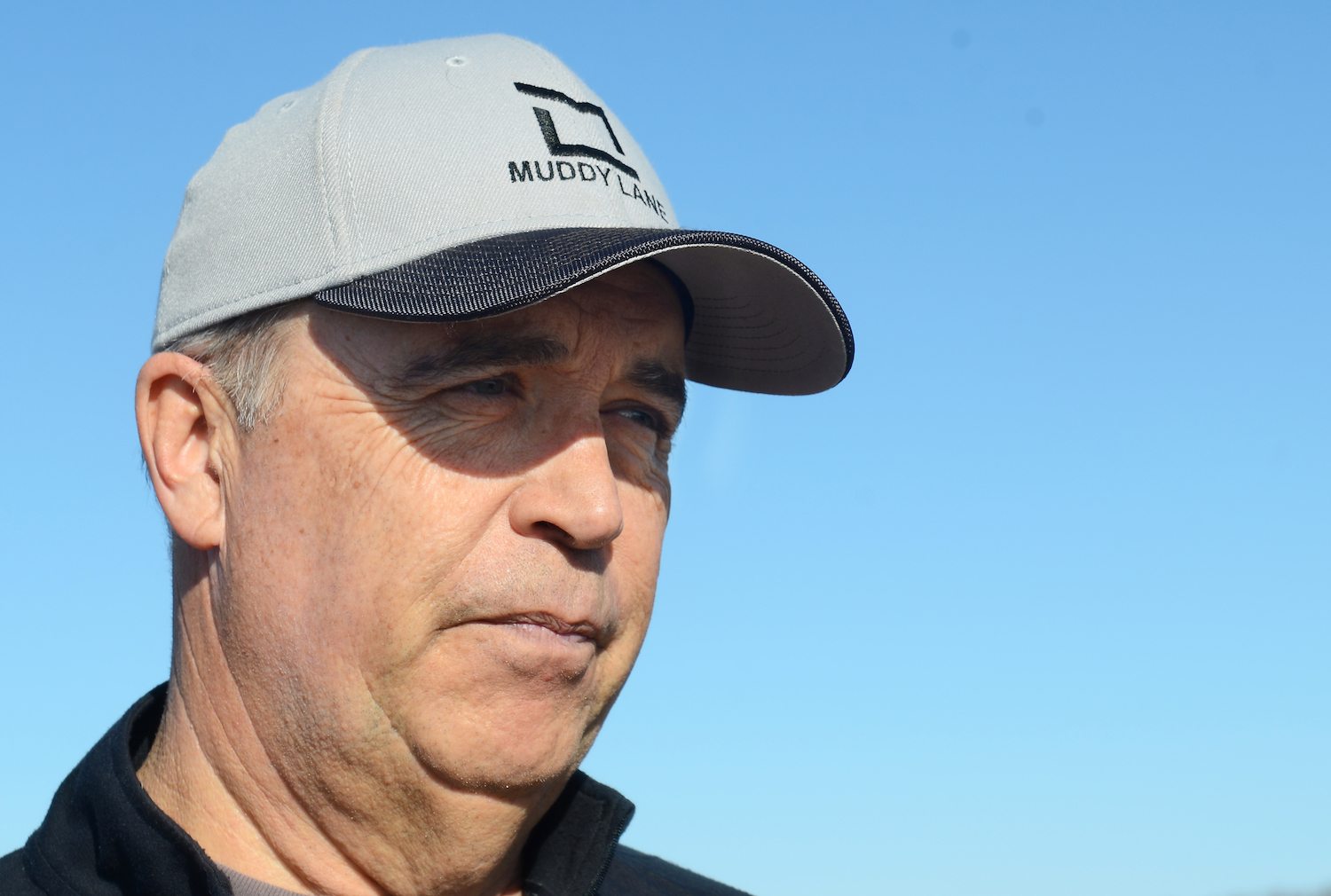
Danielle Pycior, for the Midwest Center for Investigative Reporting
The state eliminated local control over large animal feeding operations. Some rural residents want that power back.
This story was co-published with the Columbia Missourian.
This article is republished from The Midwest Center for Investigative Reporting. Read the original article here.
Pictured above: Doug Doughty looks out onto his farm Friday in Livingston County, Mo.
CHILLICOTHE, Mo. — In January 2020, a pork corporation came knocking in Livingston County.
United Hog Systems notified nearby landowners that they were filing an application for a 5,700-hog operation.
It was the first permit for a concentrated animal feeding operation (CAFO) issued for the northwest Missouri County in more than two decades.
The timing was no accident. State lawmakers had recently passed legislation that would wipe a 1997 county ordinance off the books that allowed local officials to regulate such operations and the millions of gallons of waste they produce.
When the Missouri Department of Natural Resources approved the United Hog permit in May of 2020, local residents banded together to file an appeal. They named themselves Poosey Neighbors United after their beloved nearby conservation area. In addition to the list of common concerns raised when huge animal feeding operations move in nearby, they feared that mismanagement of the CAFO’s hog manure would compromise water quality in Poosey’s fishing lakes and perhaps even their own water supply.
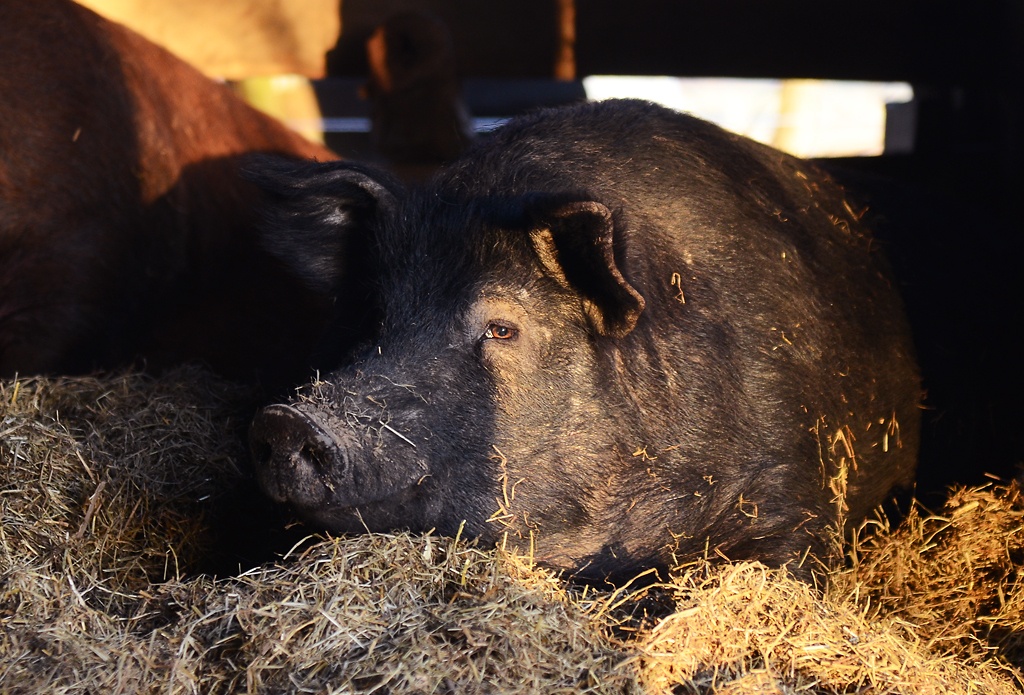
Andrew Geiser owns this hog, named Jeffery, pictured laying in the hay on Friday, March, 19, 2021, in Chillicothe, Mo. Geiser believes in what he calls “being a steward of the land. I was taught to leave things better than you found them,” he said.
Danielle Pycior, for the Midwest Center for Investigative Reporting
A few months later, the state struck another blow. DNR proposed a change to the regulatory definition of the groundwater table as it concerns CAFO designs. The change would exclude a form of groundwater called “perched water,” which may be present on the proposed CAFO site.
“These rollbacks have been systematic,” says Susan Fair, a Livingston County resident advocating for stricter CAFO regulations. “And this won’t be the last of it.”
Local health ordinances
As industrial agriculture moved into the state in the 1990s, a handful of counties saw the need to create local regulations for CAFOs.
Livingston County was one of the earliest to pass such an ordinance, in 1997. Since then, a total of 20 counties have put similar health ordinances in place, though enforcement is varied, the Missourian has previously reported.
“There was just an awful lot of things that DNR addressed that we thought needed to be stronger,” said Eva Danner Horton, former presiding commissioner in Livingston County.
Danner Horton was among the team of elected officials who drafted and signed the original ordinance and later revised it in 2009. She says it was never the intention of the commission to keep CAFOs out completely. “The intent was to make them good neighbors,” said Danner Horton.
Compared to statewide regulations, the Livingston County ordinance provides stronger setback distances between CAFOs and residences. It also outlines the option for the commission to enforce groundwater and emissions monitoring. CAFO operators are required to furnish a surety bond between $15,000 to $100,000 to the county treasurer for manure storage systems to cover any future liability. Additionally, before the permit is approved, the county is required to hold a local public hearing.
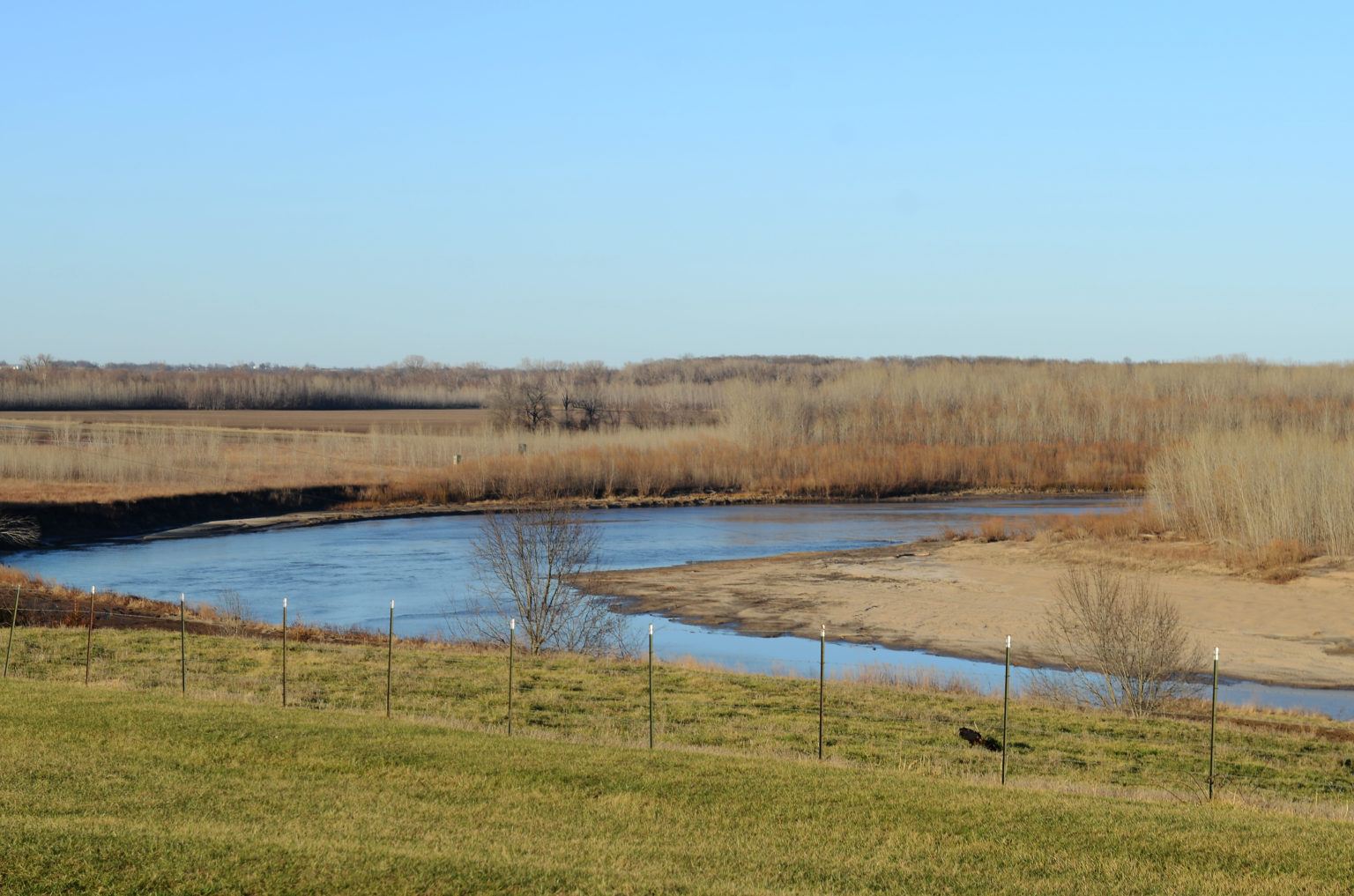
The Thompson River sits next-door to the permitted CAFO cite on Friday, March, 19, 2021, in Chillicothe, Mo. Some fear that pollution will spread from the pond on the property into the nearby creek, which feeds into the Thompson and the Missouri Rivers.
Danielle Pycior, for the Midwest Center for Investigative Reporting
In 2019, Senate Bill 391 passed, preempting local health ordinances like the one in Livingston County that are more stringent than statewide regulations. The law is being challenged in court by a small group of counties and concerned citizens, who are hoping, at the very least, that their local ordinances will be grandfathered in. Livingston County Presiding Commissioner Ed Douglas said he is glad to see the lawsuit, but didn’t feel the need to join it.
As residents await the judgement, they face the reality of having little control over who moves in next door.
A new neighbor
Bert Wire’s property is roughly 2,200 feet from the proposed CAFO site. He remembers the day he officially found out about the application through a letter in the mail, after hearing about the possibility around town for months.
“Nobody wants a CAFO in their own backyard,” said Wire. “I’ve been in the farming industry for over 40 years. I grew up on a dairy farm in Illinois. I’m used to the smell of livestock. But this is something completely different.”
Wire is referring to the odorous cocktail of particulate matter and pollutants such as ammonia and hydrogen sulfide churned out of the massive hog barns by exhaust fans. After Wire and his neighbors appealed the initial United Hog permit granted by DNR, the company withdrew its original application and submitted a new one for approximately 10,500 hogs, making it a Class 1B Operation. At that size, the CAFO would hold more than 8 million gallons of manure in a 12-foot-deep cemented underground storage pit roughly the area of two-and-a-half football fields.
DNR requires that those pits must be at least two feet above the groundwater table. But, last spring, Wire and two neighbors had a hunch that groundwater was more accessible than United Hog Systems let on in their application.
“Nobody wants a CAFO in their own backyard. I’ve been in the farming industry for over 40 years. I grew up on a dairy farm in Illinois. I’m used to the smell of livestock. But this is something completely different.”
At the time, one of his neighbors was renting a parcel of land on the proposed CAFO footprint. To investigate, they fixed a posthole digger to a skid loader and set out to dig a series of holes. Out of the six holes they dug at depths of two to three feet, four filled with water. To them, this was evidence that the groundwater table was accessible at shallow depths and that the CAFO construction would violate DNR regulations.
During the administrative court hearing, as part of the CAFO permit appeal process, Jeff Browning, an engineer hired by United Hog Systems, testified that based on the photo evidence, the water in the holes dug by the Poosey Neighbors group “look artificial.” But Browning also noted that the company hired to complete borings to determine groundwater depth had “hit a little perched water” during their site survey. Since then, many debates have ensued about perched water, and whether it could interfere with underground manure pits.
Those debates were amplified months later when the Missouri Clean Water Commission announced a plan to exclude perched water from the definition of the groundwater table used in CAFO design regulations. DNR’s Water Protection Program Director Chris Wieberg said during a public meeting that they were attempting to fix an error discovered during the appeal process of the United Hog permit.
Perched groundwater occurs when a body of groundwater is sandwiched between two sections of unsaturated earth above the main body of groundwater. Perched water bodies can come and go depending on the season and amounts of precipitation. Sometimes perched water happens to be the only potable water supply available, meaning that some wells pull directly from it.
“You don’t know how deep perched water goes unless you install groundwater monitoring wells around the perimeter of the entire site and you take groundwater samples over an extended period of time,” said Stephen Jeffery, the lawyer representing Poosey Neighbors United and the challenge to SB 391. “From that data, you can make scientific conclusions. But right now, DNR is jumping the gun. They are reaching these conclusions, but they have no data to back it up.”
Opponents of this definition change also find it odd that DNR is only attempting to exclude perched water from CAFO regulations, but that they are not advocating for a perched groundwater exemption for all waste containment design regulations.
A DNR spokesperson stated that the agency’s intention for the definition change is to correct an “inadvertent deletion” of the exemption to the groundwater table definition, which occurred during efforts to reduce “red tape” language while Eric Grietens was governor. The agency did not provide further comment to the Missourian.
Robert Brundage, a representative of the Missouri Pork Association and the Missouri Cattlemen’s Association, has also spoken in favor of the definition change. During DNR’s first public meeting on the issue, he stated that a failure to correct the inadvertent deletion is “not fair to the regulated community” who rely on clear definitions to conduct their business in accordance with state laws.
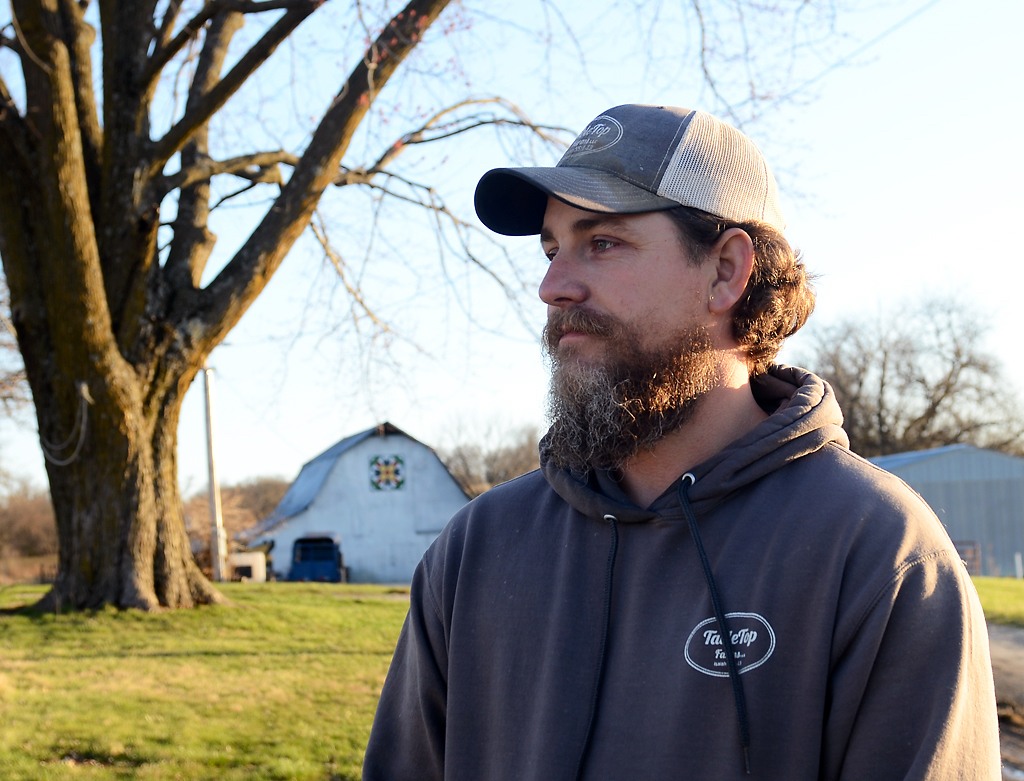
Andrew Geiser stands on his family’s 100-year-old farm on Friday, March 19, 2021, in Chillicothe, Mo. Geiser owns the land across the street from and right next to the permitted CAFO.
Danielle Pycior, for the Midwest Center for Investigative Reporting
Brundage, who has also represented United Hog Systems in the past but did not provide comment to the Missourian about their pending application, also denied assertions that CAFOs pose a threat to groundwater.
“If it’s some kind of chronic problem that exists every single day that a CAFO is out there and operating, and they’ve been operating for years in the state of Missouri, where are all the people with their polluted wells and their health being impacted?” asked Brundage during the meeting. “We haven’t seen it.”
Wieberg echoed that sentiment. He said during the November meeting that DNR probably works two cases a year related to unintentional discharge of manure from transfer technologies or land application equipment.
“I can’t put my finger on or think towards a case that we worked where we had groundwater contamination as a result of a spill, and definitely not a result of a leak,” said Wieberg, in response to a question submitted by the public during the meeting.
Though there are no documented cases of groundwater contamination as a result of CAFO mismanagement or infrastructure failure, proponents for stricter regulations say that DNR is not looking closely enough.
Potential risks
DNR does not require ongoing groundwater monitoring for Class 1B or Class 1C CAFOs. This essentially means that they rely on operators to self-report when something goes awry. Danner Horton, the former Livingston County commissioner, says this is like having “the fox watch the chickens,” and it’s a big reason why she advocated for the ability for local officials to monitor CAFO sites while she was in office.
“When’s the last time you drove down the highway over the speed limit and said, ‘Well, now, I’m going to call the sheriff so he can sit and watch me?’” asked Wire. “[The operators] are not going to call DNR. They’re going to wait to respond until somebody like me raises hell.”
It’s not just spills or leaks that advocates worry about. Mismanagement of the millions of gallons of manure applied on nearby farm fields is also a point of concern, and there’s no shortage of documented cases. Advocates point toward a 10,000-gallon manure runoff event from a 5,600-hog CAFO in Callaway County in 2014, which made its way to a tributary of Millers Creek in the Mark Twain National Forest, resulting in a $12,000 fine, according to DNR documents.
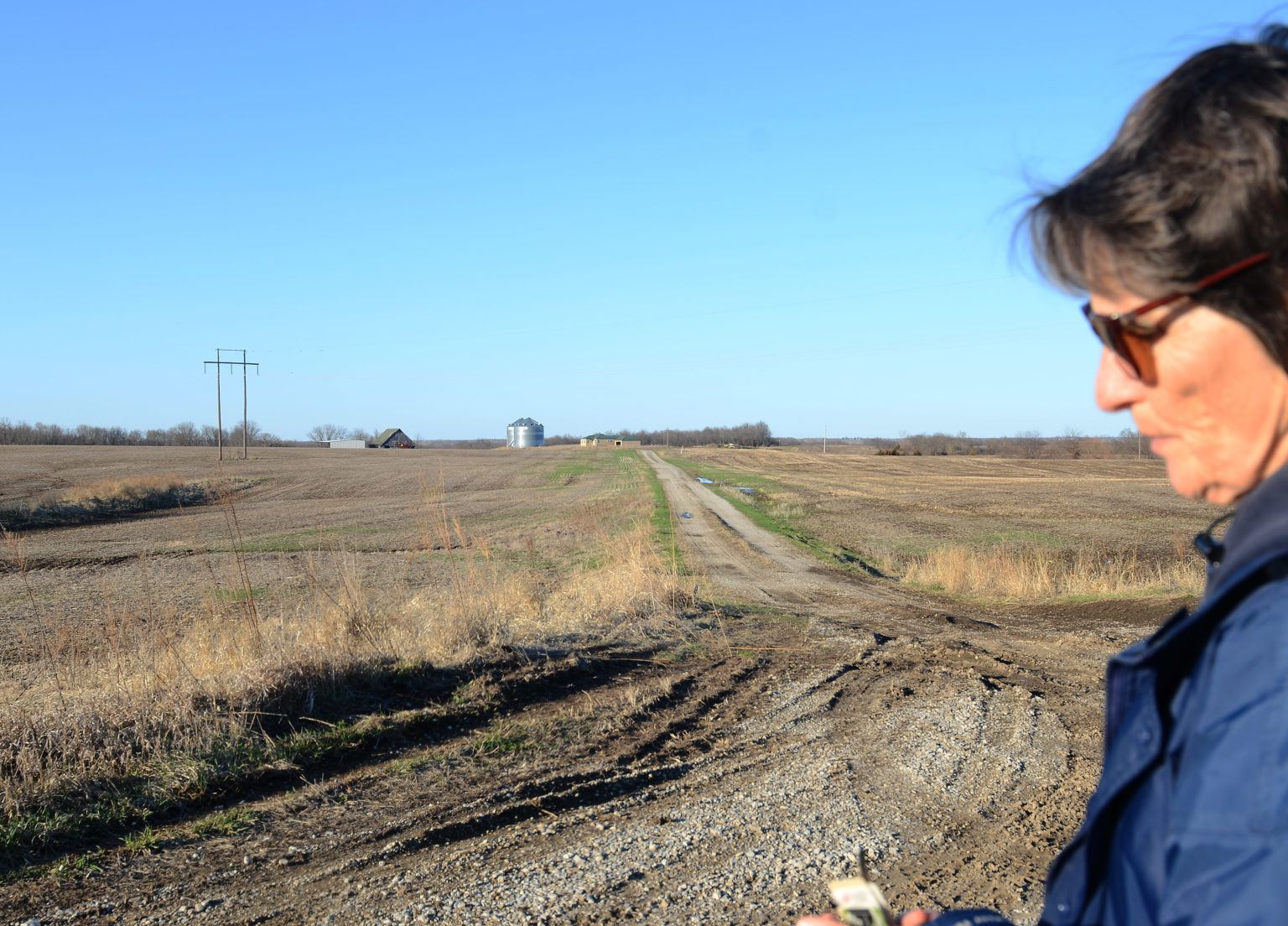
Susan Fair stands in front of the permitted CAFO land on Friday, March, 19, 2021, in Chillicothe, Mo. When Governor Mike Parson signed Missouri Senate bill 391 into law in 2019, Fair said she knew she had to do something.
Danielle Pycior, for the Midwest Center for Investigative Reporting
Another incident in Audrain County led to more than 45,000 aquatic animals dying as a result of hog effluent discharged into Sandy Creek in 2018. A year later, another incident occurred along a tributary of the West Fork Cuivre River that resulted in a 3,300 fish kill. Neither Callaway nor Audrain Counties had local health ordinances for CAFOs.
In other words, opponents of the proposed United Hog CAFO aren’t just worried about perched water. They argue a mismanagement incident of equivalent size could pollute their much beloved Poosey Conservation area, an approximately 6,000 acre site with hardwood forests, tallgrass prairie, and several lakes for fishing.
“Our conservation areas are funded by the one-eighth cent sales tax that was passed in 1976,” said Doug Doughty, a row crop farmer with a small cow-calf herd in Livingston County. He is also a member of the Jackson Township board. “When you think about the millions of dollars that Missourians have invested into our conservation areas and state parks system, what are people going to do when CAFOs move in here like they did in Iowa and their outdoor experiences are not what they used to be?”
“It doesn’t make scientific sense. It doesn’t make good technical sense. You wouldn’t do that with any other kind of industrial facility.”
Hydrogeologists have also gotten involved in the debate. The Missouri section of the American Institute of Professional Geologists (AIPG) wrote a letter to urge Wieberg to create a working group of geologists and other qualified professionals to provide input on the proposed perched water exemption.
“Why did they make an exception to selectively exclude perched water?” asked Matthew Rhoades, president-elect of AIPG and a member of the Missouri section. “It doesn’t make scientific sense. It doesn’t make good technical sense. You wouldn’t do that with any other kind of industrial facility.”
Rhoades, who describes himself as a “capitalist, pro-ag, pork guy,” said AIPG did not receive a response from DNR, although the offer still stands to create a working group of geologic experts to discuss the issue.
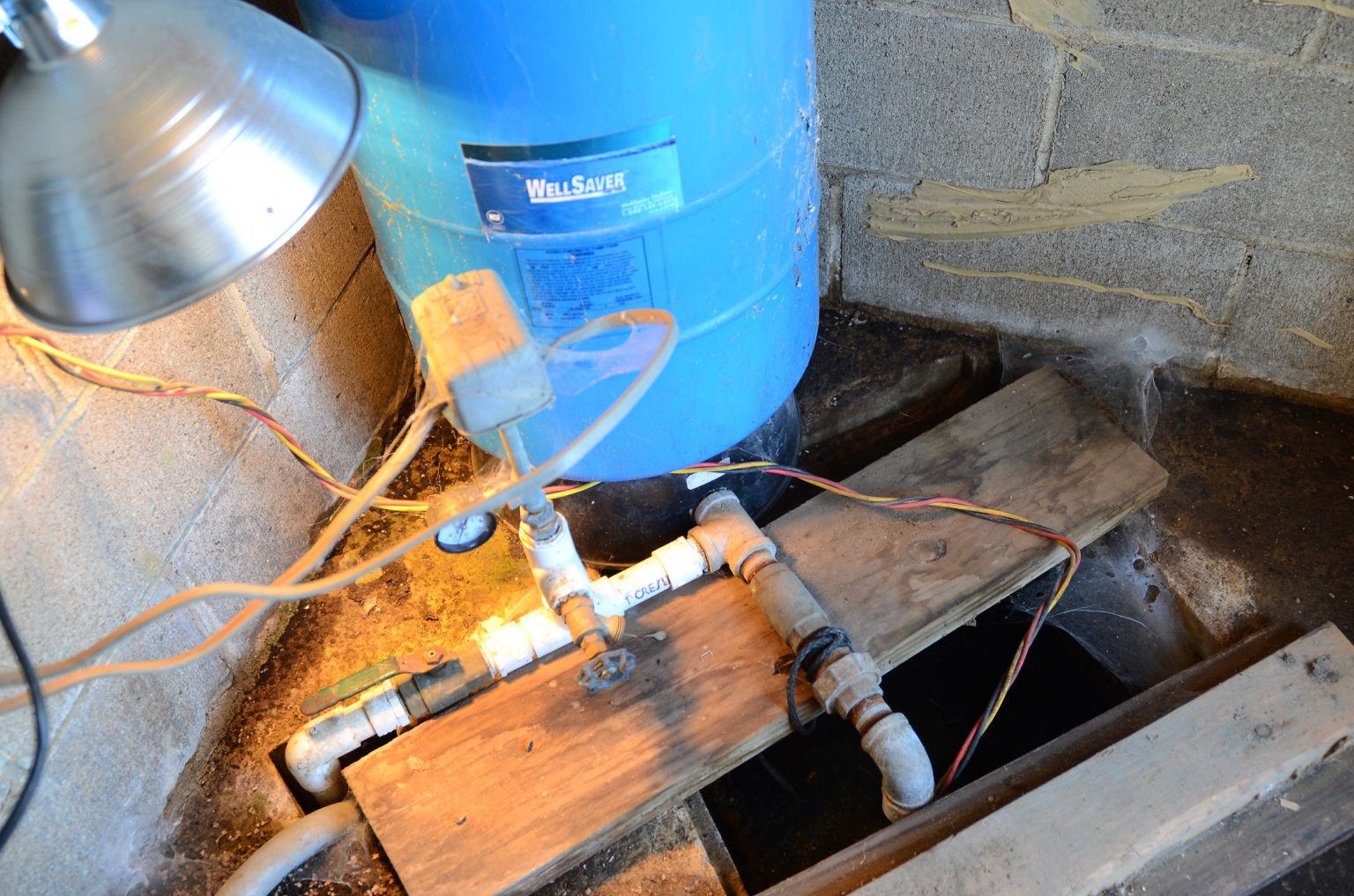
For rural residents across the state, water needs are met through groundwater, which is pumped up hundreds of feet through pipes. Susan Fair said if residents don’t test their groundwater now, it’ll be hard to hold polluters accountable later.
Danielle Pycior, for the Midwest Center for Investigative Reporting
The Clean Water Commission not only moved forward with the definition change in mid-December, but invoked an emergency rule change, which expedites the approval process. That move was quickly challenged in court, and parties are awaiting the judgement. In the meantime, the public comment period is underway.
Local impact
Opponents to the rule change say that this is just the most recent in a pattern of loosening statewide regulations for CAFOs.
“We’re seeing agribusiness corporations getting even more concentrated, so concentrated that they own and control huge percentages of commodity markets and industries,” said Tim Gibbons, communications director for the Missouri Rural Crisis Center. “And when you lose competition and you have huge amounts of corporate concentration, family farmers lose, consumers lose, our environment loses, and our fight for democracy loses.”
State Rep. Rusty Black, R-Chillicothe, has property just a few miles from the proposed CAFO site in Livingston County. He says that while he doesn’t have an issue with CAFOs coming into his district, as a small-scale cattle farmer he recognizes the future implications of letting big agriculture operations take up space.
“I’ve been told I will live long enough to no longer be viable in the cattle business,” said Black. “I used to not think that was true, but since I’ve been here, maybe I’ll be able to raise cows for hobby, but me being able to sell is probably on its way out.”
“A lot of times CAFOs are actually extractive of the community’s resources and they’re actually going to impose more costs, especially to the taxpayer, for having to maintain the roads with all of these truckloads of animals or feed or tankers of manure.”
Black says he would love for his grandchildren to experience the days he spent in his youth on his grandparent’s farm, but agriculture is “ever evolving.”
Part of that evolution has been ushered in by Missouri lawmakers as they’ve opened their arms to agribusiness in the state.
But rural communities do not always experience the financial boom they’re promised when big agriculture operations move in. According to Livingston County Presiding Commissioner Ed Douglas, it remains unclear how many jobs will be created by the United Hog CAFO, how transportation infrastructure will be affected due to increased truck traffic, and to what extent property values may decline over the long-term in the areas surrounding the facilities.
“A lot of times CAFOs are actually extractive of the community’s resources and they’re actually going to impose more costs, especially to the taxpayer, for having to maintain the roads with all of these truckloads of animals or feed or tankers of manure,” said Ashlen Busick, a regional representative of the Socially Responsible Agriculture Project, an advocate for family farms. “These smaller communities and townships have to foot the bill for keeping up with road maintenance. They really have to carry the burden for the CAFO.”
Some studies show that human proximity to CAFOs has been linked to exacerbated asthma symptoms and allergies.
Human health is also a factor in the argument to heavily regulate CAFOs. Some studies show that human proximity to CAFOs has been linked to exacerbated asthma symptoms and allergies, and the CDC reports that repeated exposure to emissions from CAFOs can increase a person’s likelihood of developing respiratory diseases.
But for some, the benefits of being a welcoming state to industrial agriculture far outweigh the potential risks. According to the University of Missouri Extension website, Missouri ranks in the top ten for pork production in the U.S., amounting to a nearly $1 billion industry for the state.
Ray Massey, Professor of Agricultural Economics with MU Extension, said that few people raise small numbers of pigs these days because it’s difficult to make a profit on a small-scale. “The larger you are, you can raise pigs for a lower price. Now, it doesn’t go on forever, but if you have 5,000 pigs you can raise them cheaper than if you had 1,000 pigs,” Massey said.
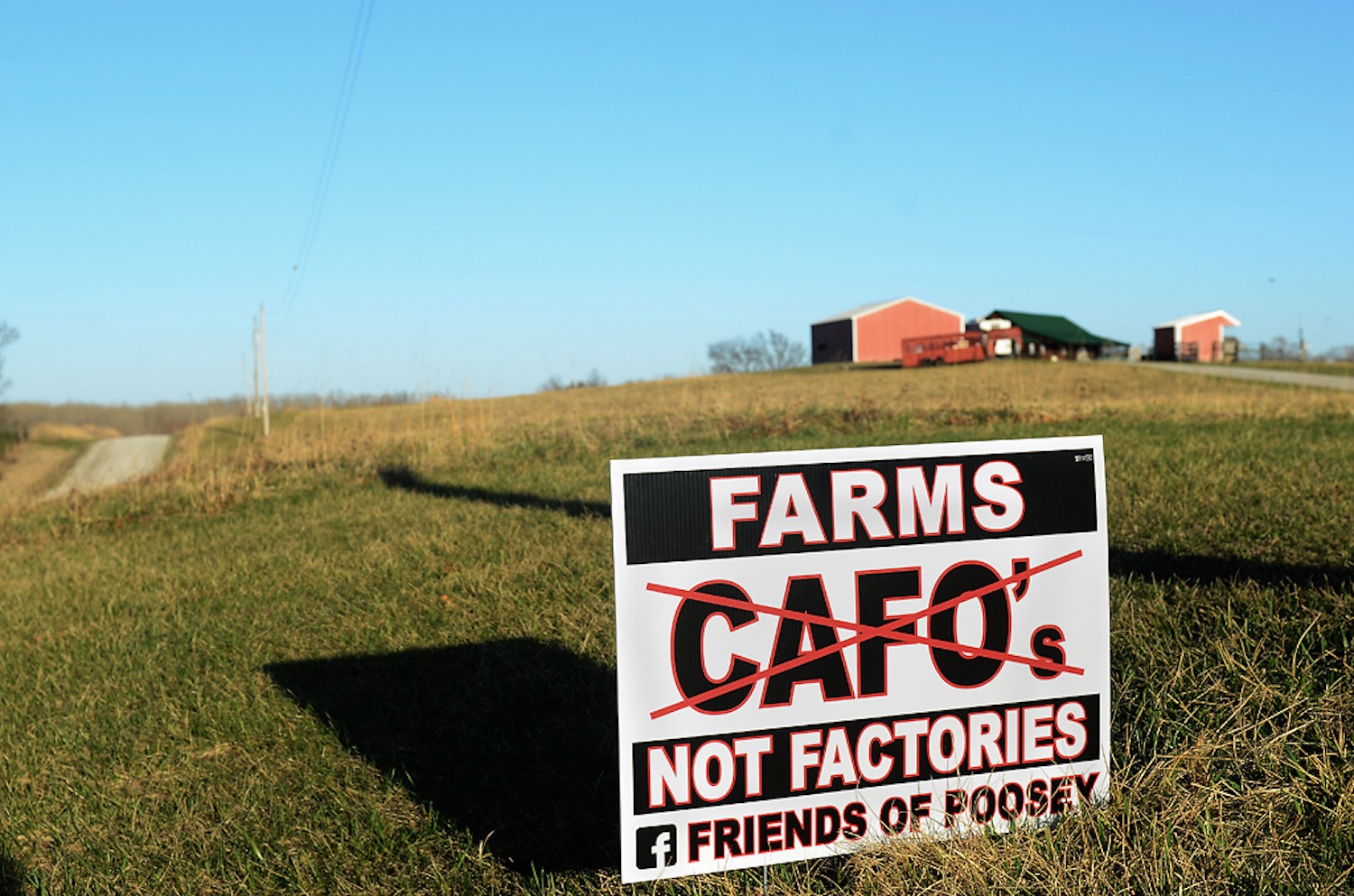
Friends of Poosey, which began as a group of concerned neighbors, work to protect the Poosey Conservation Area, among other areas nearby the newly permitted CAFO.
Danielle Pycior, for the Midwest Center for Investigative Reporting
According to Massey, who has worked for MU Extension for 25 years, CAFOs provide some of the only agriculture jobs available in rural regions. “So do you want zero employment…or do you want a business that will raise pigs, employ construction and feed manufacturers and veterinarians?” said Massey.
As regulations for CAFO sites are reformulated by state officials and corporate influence looms large in the halls of the state Capitol, who stands to benefit from these massive industrial operations?
It can be difficult to track CAFO contract arrangements, because oftentimes U.S. companies own the land and the facilities, but foreign corporations own the livestock. United Hog Systems, the company behind the Livingston County CAFO permit, is a domestic company based in Marshall, and the land the CAFO would be built on is managed by a firm based in Grower. These project stakeholders are not in Livingston County.
According to testimony in the administrative commission hearing regarding the appeal of United Hog’s initial permit, Brazilian-based JBS owns the hogs in United Hog operations. JBS is a Brazilian corporation and the largest meat producer in the world. They received $78 million in U.S. bailout assistance in 2019, according to reporting by the Washington Post. The company has also been charged with price fixing, meat contamination, and violating U.S. anti-corruption laws.
“Industrialization and corporate takeover of our livestock markets would not look the way it looks without a lot of unintentional backing by taxpayers. It’s all a setup game for them to control our food system,” said Gibbons.
Foreign-ownership, diminished local control, and jargon-filled regulatory debates inaccessible to most members of the public are intersecting issues that come with a globalized, industrial food system. But the future implications for Livingston County residents remain unknown.
“What’s going to happen to our town?” said Susan Fair, a Livingston County resident organizing around these issues. “If we have no say, I mean, do they just get to do what they want? It makes me nervous, but we don’t have to just roll over.”
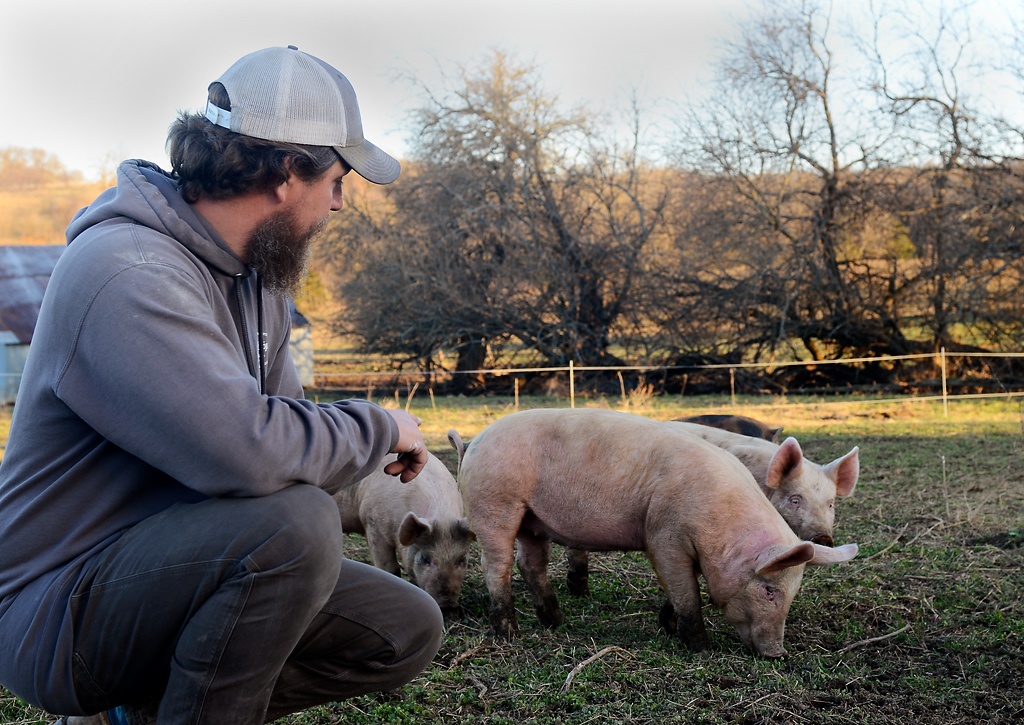
Andrew Geiser pets his pigs on Friday, March 19, 2021, in Chillicothe, Mo. He owns and manages chickens, cows and hogs, and rotates them around the 226 acres they all call home.
Danielle Pycior, for the Midwest Center for Investigative Reporting

